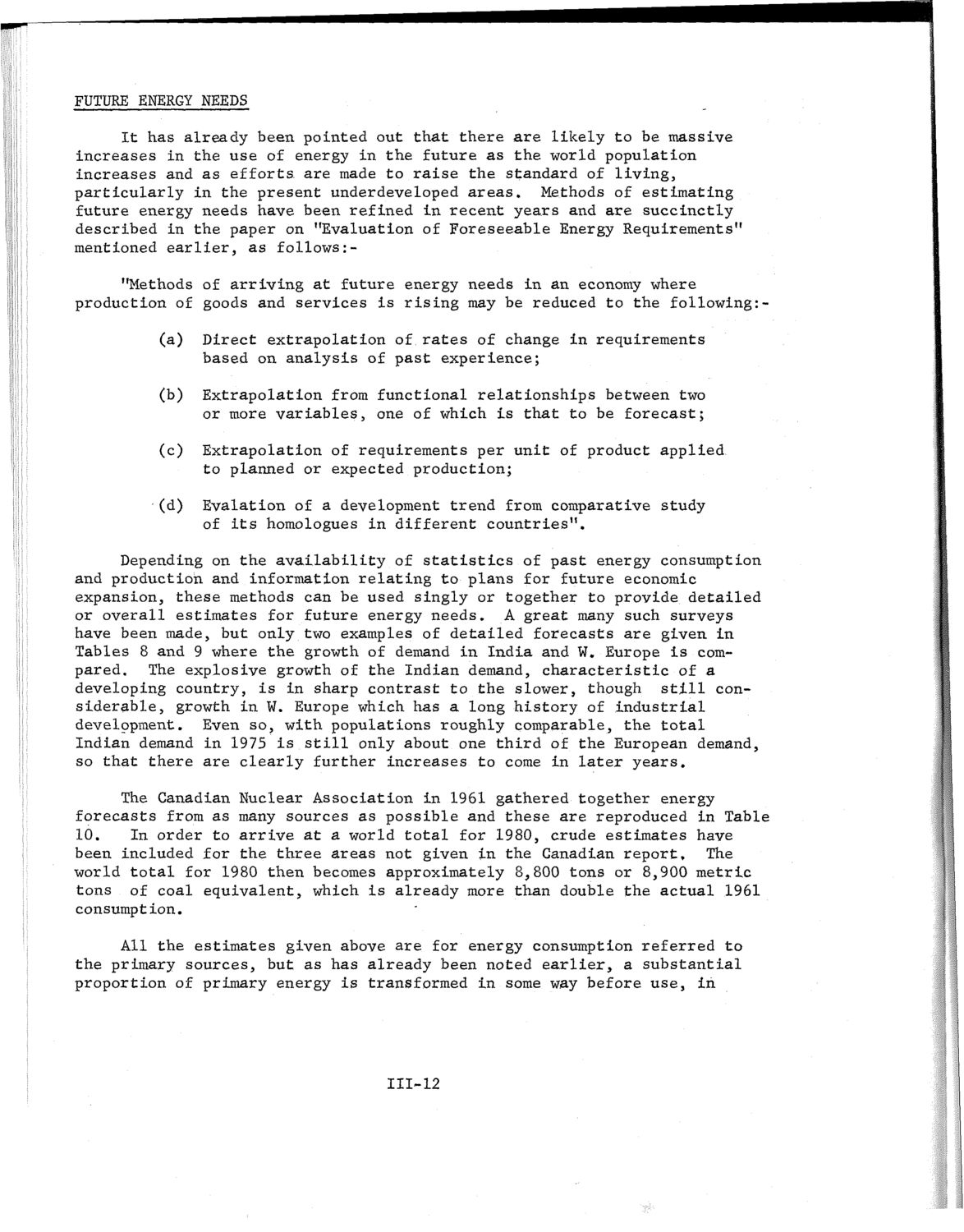| |
| |
Caption: SWE - Proceedings of the First International Conference of Women Engineers and Scientists
This is a reduced-resolution page image for fast online browsing.

EXTRACTED TEXT FROM PAGE:
FUTURE ENERGY NEEDS It has already been pointed out that there are likely to be massive increases in the use of energy in the future as the world population increases and as efforts are made to raise the standard of living, particularly in the present underdeveloped areas. Methods of estimating future energy needs have been refined in recent years and are succinctly described in the paper on "Evaluation of Foreseeable Energy Requirements" mentioned earlier, as follows:"Methods of arriving at future energy needs in an economy where production of goods and services is rising may be reduced to the following:(a) Direct extrapolation of rates of change in requirements based on analysis of past experience; (b) Extrapolation from functional relationships between two or more variables, one of which is that to be forecast; (c) Extrapolation of requirements per unit of product applied to planned or expected production; (d) Evalation of a development trend from comparative study of its homologues in different countries". Depending on the availability of statistics of past energy consumption and production and information relating to plans for future economic expansion, these methods can be used singly or together to provide detailed or overall estimates for future energy needs. A great many such surveys have been made, but only two examples of detailed forecasts are given in Tables 8 and 9 where the growth of demand in India and W. Europe is compared. The explosive growth of the Indian demand, characteristic of a developing country, is in sharp contrast to the slower, though still considerable, growth in W. Europe which has a long history of industrial development. Even so, with populations roughly comparable, the total Indian demand in 1975 is still only about one third of the European demand, so that there are clearly further increases to come in later years. The Canadian Nuclear Association in 1961 gathered together energy forecasts from as many sources as possible and these are reproduced in Table 10. In order to arrive at a world total for 1980, crude estimates have been included for the three areas not given in the Canadian report. The world total for 1980 then becomes approximately 8,800 tons or 8,900 metric tons of coal equivalent, which is already more than double the actual 1961 consumption. All the estimates given above are for energy consumption referred to the primary sources, but as has already been noted earlier, a substantial proportion of primary energy is transformed in some way before use, in 111-12
| |